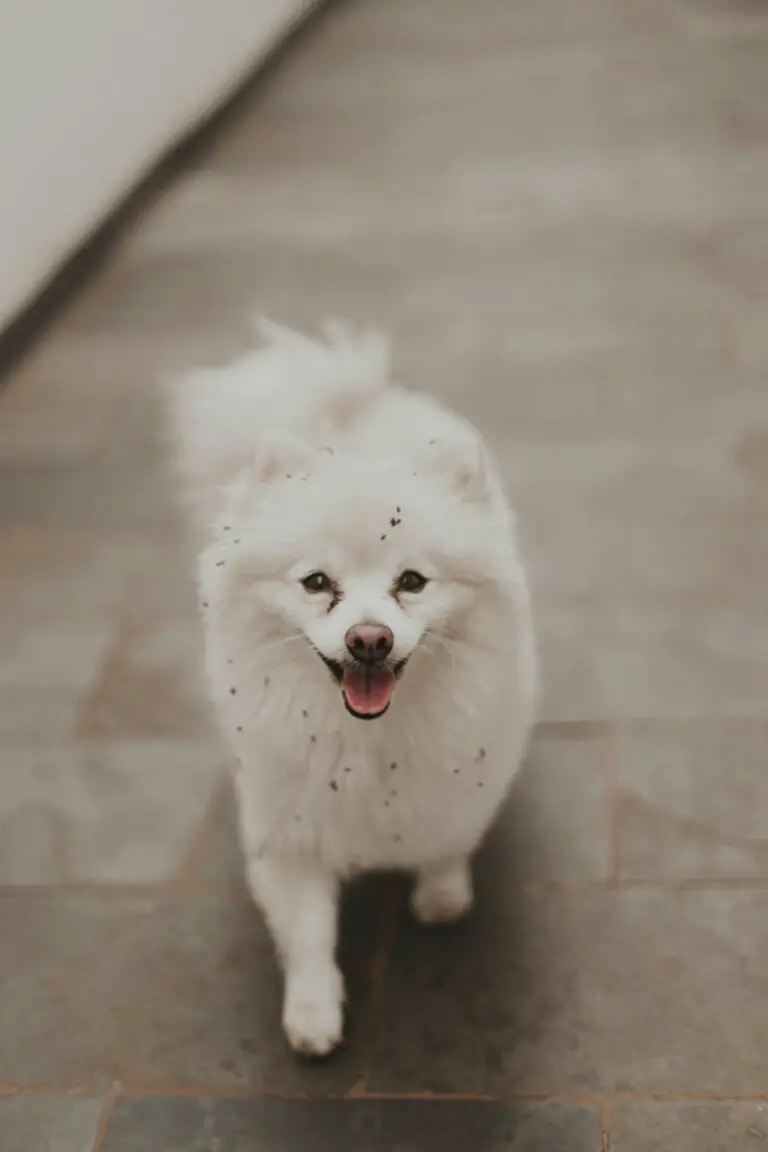Kind, affectionate, and sometimes mischievous, the pug can be the ideal pet for those looking for a small, family-friendly, low-maintenance dog. If you are thinking of bringing one home, it is very likely that you have already asked yourself: how many types of pugs are there?
Although in this case, one cannot speak of “types” in a literal sense, admirers of the breed use this term to refer to the different colors, patterns, and markings.
Keep reading below to find out what are the types of pug colors and their characteristics, what are considered rare pugs, what changes pugs can exhibit depending on their color, and how to tell if a pug is purebred or not.
Table of Contents
What are the different pug colors?
Pugs exhibit a wide variety of colors and markings, of which only 4 are recognized by the most important clubs in the world. The two most common types are the fawn pug and the black pug, both of which are recognized by the American Kennel Club (AKC) standard. Additionally, the International Cynological Federation (FCI) recognizes the colors silver and apricot.
But the truth is that the spectrum within the pug breed is much broader. If we count the official colors, the variations that are not accepted within the standard, and those colors that are considered “rare”, we will obtain a list of approximately 15 colors and patterns in total. These are:
- Light fawn or fawn
- Black
- Apricot
- Silver
- Fawn-apricot
- Fawn-silver
- Fawn-sooty
- Blue or gray-silver
- Variegated (brindle)
- Merle
- Chocolate
- Panda
- Black and tan
- Stained
- White paw
Common and rare types of pugs
Fawn or Fawn Pug
This is the quintessential type of pug: fawn with a mask and black ears. It is said that nearly two-thirds of all pugs are that color. The coat of these specimens can vary from a light fawn tone to a medium golden fawn or a beige with silver nuances.
There is even the fawn-apricot pug, which exhibits orange or reddish tones.
Although most fawn pugs have a solid or uniform colored coat, some may have variations. For example, cream-colored areas that are lighter or darker than others, as well as dark shadows made up of hairs of a different shade (sooty pug).
Black pug
Black is the second most seen and recognized color. It is a rich black coat, always uniform and intense throughout the body. Occasionally a small white marking may appear on the chest, and in rare cases, the white color may also appear on one or more legs.
This white coloration is possible in all types of pugs but is particularly noticeable in black pugs. According to experts, its presence is due to a parti gene. Although black is accepted by all standards, a black pug with white paws will never be approved of in show rings.
Those pugs that have two genes for black appear to have a bluish-black coat, which is more visible in sunlight. These specimens always produce black puppies because black is a dominant color.
For their part, pugs with one gene for black and one gene for fawn will also have black fur, but with a more rusty sheen.
A very common characteristic in black pugs is the appearance of gray hair on the face, or other areas of the body, as they age.
Apricot and Fawn-Apricot Pug
Apricot is a deeper or warmer orange color than fawn. A pug whose coat falls in the range of light fawn to deep apricot may be classified as fawn-apricot at the discretion of its owner.
These specimens still have black ears and facial masks.
It is very common for the apricot type of pug to not be completely that color. Many dogs have beige, or even almost white, patches on some areas of the body (most often the chest).
Silver and Fawn-Silver Pug
The silver color is a unique variation, not very common. Breeders sometimes think they have obtained a black pup when in fact it is a silver pug. Pugs of this type exhibit a fascinating, shiny grayish coat, which can range from a medium to dark shade.
Many people often confuse the color silver with fawn-silver, but it is not the same thing. Silver refers to a gray color with dark shading or undertones, while fawn-silver is precisely a very light type of fawn.
In fact, it is the lightest color a pug can be.
Note: Apricot and silver colors are not accepted by the AKC but are accepted by the FCI and the KC (Kennel Club of UK).
Now, there are some types of pugs that, due to their unusual color, are often called ” very rare “. Among them are the following:
Brindle Pug
Variegated refers to a color variation consisting of many shades intermixed creating a striped pattern. In pugs, this primarily includes the colors fawn, gray, and black. For example, there are the silver-brindle pug, the apricot-brindle pug, and the reverse brindle, which is much darker in appearance.
These specimens also retain the black color in the ears and the face mask.
The brindle pattern is considered rare in pugs, but it is quite common in other dog breeds, including the American bulldog, boxer, chihuahua, and pitbull.
White pug and albino pug
The white pug is extremely rare. In essence, it is a pure white coat dog, with traces of a very light cream pigment only in the mask and the line along the back. This type of pug should not be confused with the albino pug.
Unlike the white pug, the albino is not obtained as a result of selective breeding, but because of the presence of the gene that causes albinism. A characteristic that helps to differentiate them is that albino specimens always have a pink nose and skin around the eyes.
Pug merle
The merle color in pugs occurs due to a specific gene that causes the presence of mottled spots, often blue or bluish-grey, on a solid-colored coat or patches of two distinctive colors (piebald). The same pattern can be present on the dog’s skin.
Merle pugs are characterized by having blue eyes or each eye a different color.
Note: Not all merles are obtained naturally. Some breeders have been known to produce these puppies through selective breeding.
The so-called “rare colors” are also not accepted by the different kennel clubs. As a prospective owner, you’ll want to consider that many of them are not purebred pugs, nor do they come naturally. These specimens are the product of indiscriminate breeding and crossing with other breeds.
Characteristics and special markings of the pug breed
Ears and mask
All non-black pugs should display a well-defined, dark, black facial mask, beginning below the chin, covering the muzzle, and extending over the eyes. In addition, the ears must also be black.
This is a very defining characteristic within the breed, especially for the fawn pug, fawn-silver pug, and fawn-apricot pug.
It should be noted that some specimens may have black mainly on the snout and then around the eyes, with little connection between the two points; or on the contrary, the black can extend from the muzzle to the eyes without interruption.
Diamond mark
Many pugs have a dark-colored patch, also known as a “diamond mark,” in the center of their foreheads. Although it is a highly desired birth trait, not all specimens have it. And of course, this is not seen in black pugs.
The diamond name refers to the shape of the mark, however, sometimes it can look more like an oval, a circle, and can even be irregular in shape.
The wrinkles on the pug’s forehead usually give the sensation of a shadow similar to the diamond mark, but it is not the same. The true marking is caused by a touch of darker color in the coat.
Shadow or dorsal streak
Likewise, pugs usually have a kind of strip or trail of darker fur that extends over the upper part of the body, along the entire back. Likewise, this is only seen in non-black pugs.
Shading can start at the nape of the neck or a little lower on the back. It forms a predominantly straight line and ends at the base of the tail. Their thickness and density may vary.
In some cases, this characteristic can be very apparent during the puppy stage, then fade as the dog matures. In others, the mark may not be present on the pup but may be present as the pup grows.
Smut
Soot refers to a noticeable overlap of black hairs in pugs with light coats, namely fawn, silver, apricot, and their respective combinations. These patches of dark fur are thin enough to expose the lighter hairs below, giving the dog the typical “smooth” appearance.
Such a pattern can appear on almost any area of the body, including the back, flanks, legs, and head.
Eye color
All purebred pugs have brown eyes. This can range from medium brown to dark brown; in fact, there are Pugs with eyes so dark that they appear almost black.
The color type does not affect the shade of the eyes. Just because a pug is a fawn does not mean that it will automatically have lighter eyes than a black pug.
White paws
Can pugs have white paws? Despite being a fairly rare trait, some specimens have light or white legs, as if they were gloves. This can happen in one, several, or all legs.
As explained, these marks are due to the presence of the parti gene, the same one that is responsible for the small white spots that appear on the chest.



